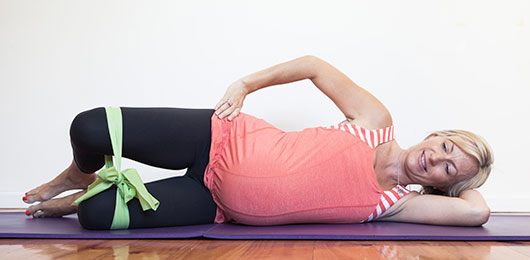Pelvic Joint Pain

The pelvis is composed of three main joints, the pubic symphysis joint at the front and two sacroiliac joints at the back, one on either side. During pregnancy,
a hormone called relaxin causes the ligaments and joints to soften in preparation for delivery. There can be increased movement in the joints, which
can result in discomfort or pain in pubic symphysis, groin, inside of your thighs, low back or directly over your sacroiliac joints.
Although this pain in pregnancy is common, there are many things you can do to
manage it.
To help minimise your pain:
- Rest – take the weight off your pelvis whenever possible.
- Try to break up tasks which require lots of standing or walking into smaller pieces. i.e. do your shopping at the local shops instead of the big shopping
centre.
- Avoid standing on one leg, or activities with legs wide apart.
- When walking take smaller steps.
- Try to avoid prolonged sitting or standing – change position frequently.
- Climb stairs one at a time or if possible avoid them.
- When getting in and out of the car, use a plastic shopping bag to sit on and swivel legs around together.
- Keep legs together when rolling in bed. Try sleeping with a pillow between your thighs.
- When getting in and out of bed roll on your side first, keeping legs together, then push yourself up using your arms.
- Avoid heavy lifting and heavy household chores, especially vacuuming.
- For pain relief try an ice pack / frozen peas wrapped in a damp towel applied to the painful area. Apply for up to 20 minutes, 4 hourly as required.
- Try to sit down whilst dressing, especially to put your knickers or trousers on, as you want to avoid standing on one leg.
- When standing up from a seated position, squeezing your buttocks might help.
- Wearing a support belt or being taped up during walking and standing activities may provide good relief.
Exercise:
- Avoid long walks and especially uneven ground and hills.
- Deep abdominal muscle exercises and pelvic floor exercises are extremely important to help support the pelvis.
- When swimming avoid breaststroke (as the legs are wide apart).
- Some pilates exercises may need to be modified - please remind your instructor about your pain levels prior to the class.
Labour Advice:
- Avoid asymmetrical positions or having your legs too wide apart.
- You will need to discuss delivery options and positions with your midwife and obstetrician. If you have an epidural, ensure that your support people
know not to pull your legs too wide apart.
After your baby is born:
Having your baby is the best cure of all! The effects of the hormones that cause the problem can stay in your system for quite a few months after delivery
and therefore care is required especially in the first 3-6 weeks. Keep doing your deep abdominal and pelvic floor exercises, and take care as you gradually
increase your exercise tolerance.
